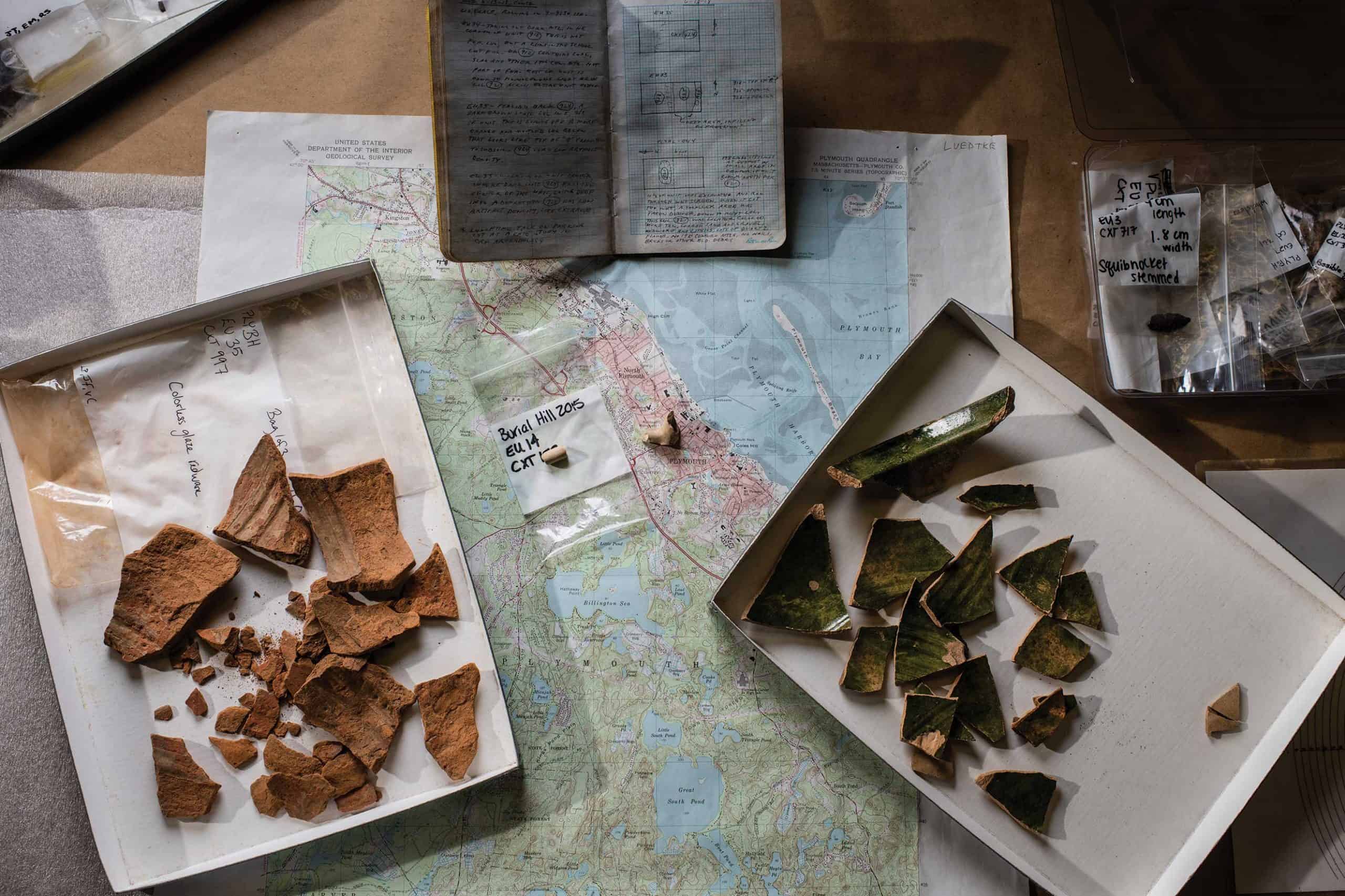Archaeologists uncover evidence of the early Pilgrim settlement
By Dave Kindy
Photography courtesy of David Landon
If there was a holy grail in Plymouth, this would be it. Last summer, archaeologist David Landon and his team found what they believe to be evidence of the palisade wall that surrounded the settlement and first fort of the original Plymouth Colony.
“It’s exciting,” says Landon, who is the associate director of the Fiske Center for Archaeological Research at University of Massachusetts Boston. “It’s like a big jigsaw puzzle and we’re putting the pieces together. This discovery is really helping us to define the landscape on Burial Hill.”
Since 2012, Landon’s team has been working on the dig, trying to find past Pilgrim possessions on the steep hill overlooking



Town Square. Located next to the Church of the Pilgrimage in downtown Plymouth, the site was believed to be the place where the early English settlers built their fort, though four centuries of soil and debris now obscure Burial Hill. This is also the spot where the Pilgrims buried their dead following that first cruel winter of 1620-21.
Over the past eight summers, the dig has turned up an array of Pilgrim artifacts, including pieces of pottery, as well as Native American tools, some dating back thousands of years. In 2019, just in time for the 400th anniversary of the Mayflower’s arrival in Plymouth, the team struck pay dirt.
There, under several feet of earth, was evidence of postholes. Although the wood was long rotted away, Landon could tell that they had found the palisade because of the circular areas of darker earth. The archaeologists were able to find two such spots, which enabled them to identify the outer edge of the Pilgrim settlement.
“This discovery helped us understand the distribution of artifacts,” says Landon. “We couldn’t figure out why we found Wampanoag and European relics together. Now we think that Native Americans were camped on the opposite side of the palisade so they could trade with the settlers. In all likelihood, there was a gate near here too.”
In addition to the postholes, Landon’s team also found evidence of two structures located near the palisade. They think one of the buildings may have been the home of Myles Standish, the military leader of the original Pilgrim Colony.
“There’s no smoking gun, but that theory fits with the limited knowledge we have of where people lived in the settlement,” says Landon.
The artifacts from the dig are still being studied but will eventually become part of an exhibition. Landon plans to return this summer to continue excavations in hopes of finding even more items.
“The digs are always exciting, but it’s even more thrilling now that we know what we are digging for,” he says. “These postholes and building foundations give us a pretty darn good idea of where to look.”
For more information, visit fiskecenter.umb.edu.
